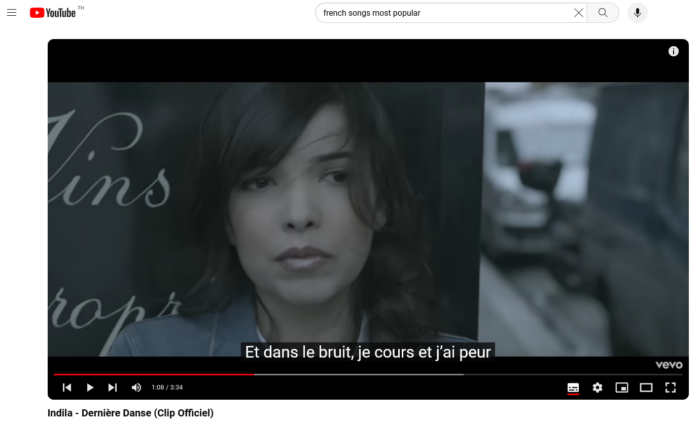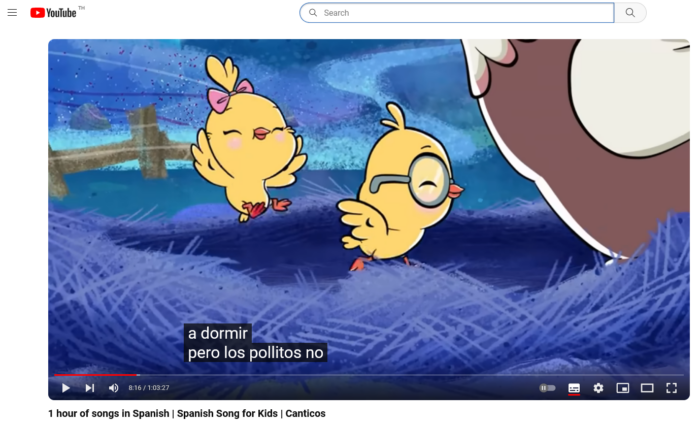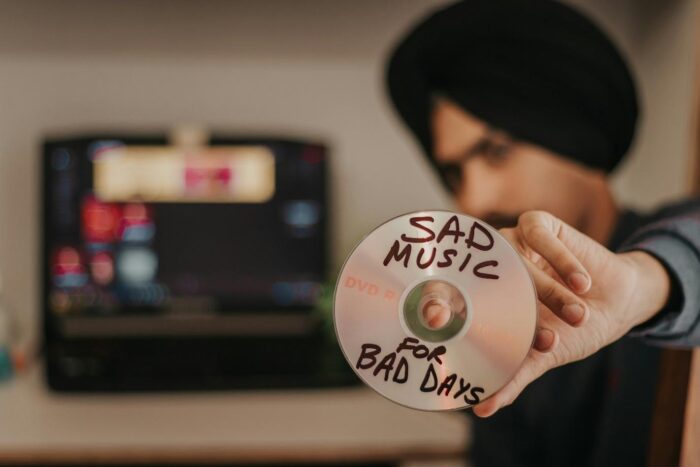Can You Learn a Second Language from Songs?
Read other articles:
Back to posts
Table of Contents
- 1 Songs and music are “edutainment”
- 2 How does music aid language learning?
- 3 Improved listening skills
- 4 Greater cultural insight
- 5 What is content and language integrated learning (CLIL)?
- 6 Tips for learning a foreign language from songs
- 7 Are there any downsides to learning a language through songs?
- 8 Learn your language through YouTube videos…
How about improving your foreign language learning simply by listening to songs and music?
Or enhancing your recall and usage of new phrases by translating song lyrics?
Learning Italian from opera songs or Korean from K-Pop, for instance?
If that sounds like fun, read on because we’re going to look at how surprisingly effective language learning from songs can be—and pass on a few tips about how you can adopt this approach most effectively.
Learning a second language through songs can be a highly engaging way to acquire the language. Provided you select the right songs, you have access to compelling, “comprehensible input” in a relaxed environment: these are central components of Stephen Krashen’s Second Language Acquisition Theory.
Let’s take a closer look…
- Songs and music are edutainment
- How does music aid language learning?
- Improved memory and recollection
- Improved listening skills
- Greater cultural insight
- What is content and language integrated learning (CLIL)?
- Tips for learning a foreign language from songs
- Make sure the songs are pitched at the right level
- Play the song(s) repeatedly
- Immerse yourself in the language
- Watch—don’t just listen
- Save new phrases to a language library
- Practice passive as well as active learning
- Are there any downsides to learning a language through songs?
- Learn your language through YouTube videos…
Songs and music are “edutainment”

How does music aid language learning?
The research points to a “tight relationship between music and language functions”. For instance, phonological awareness, a useful linguistic skill for reading and writing, has been shown to be related to pitch awareness and musical ability.

Songs can introduce new phrases into the vocabulary—but they work on multiple levels for effective language learning, The benefits extend well beyond improving vocab.
Songs expose you to the sounds and culture of the language as well as the language itself—without having to visit native speakers in person.
Here are some ways that music and songs help with language learning…
Improved memory and recollection
Even many non-English speakers know phrases like “Don’t worry be happy”, “No woman no cry” or “Welcome to the Hotel California” because they know the songs.
When hearing a song lyric over and over, it becomes embedded in the memory. So, songs can help us memorize and recall words and phrases. This is because the words are associated with a melody/rhythm and often produce an emotional response in listeners. This makes the language more “memorable”.
Research suggests that exposure to a language’s rhythm can also improve language ability because we segment speech patterns better.
Songs also frequently tell stories—and storytelling has long been identified as an effective way to learn languages.
Improved listening skills
Stephen Krashen talks about the importance to learners of listening and reading (language input) as well as speaking and writing (language output)—especially in the early stages of learning a language, when confidence levels in using it may be low.
Songs are all about close listening and repetitive playing. Often, it takes a lot of attention to make out the precise words, a process that improves listening skills in learners, training ears to distinguish individual words and different sounds/accents.

Greater cultural insight
Songs are an important window into a people’s culture—not simply their musical ability.
Listening to native songs provides insight into beliefs, mannerisms, practices, and heritage. This is important if you aspire to a near-native-speaker level and hope to converse at a deeper level than a purely transactional one. Advanced learners can try listening to protest songs in the target language, for instance.
Because the language in songs is usually very informal, it can also provide exposure to “street language” and slang that we otherwise might not be aware of.
What is content and language integrated learning (CLIL)?
Content and language integrated learning (CLIL) is based on the premise that learning a topic of interest in the target language rather than the language itself through grammar rules, etc. is more effective for the learning experience.
Say that you’re learning French. You could focus on a subject as “heavy” as the French Revolution or as “light” as a cookery program on how to make a favorite French dish.

As long as the medium of instruction is the target language (not the learner’s mother tongue) and the topic is engaging, CLIL can be an effective learning method because people learn something of interest along with important cultural insight.
Learning a second language from songs can be seen as a form of CLIL. For Spanish learners who love listening to music, for instance, it’s easy to find songs in Spanish to learn the language from—with a different type of language to that used in textbooks, tutorials, newscasts, documentaries or TV shows/movies.
With our free Chrome extension, you can watch subtitled song videos and have the lyrics translated as you go.
Tips for learning a foreign language from songs
If you’re interested in learning your language through songs, bear the following tips in mind:
Make sure the songs are pitched at the right level
One advantage of using songs for language learning is that they usually use relatively straightforward language—unlike newscasts, newspapers or some TV documentaries that frequently use more formal and complex sentence structures/vocabulary.
That said, anyone learning English might do better learning from Taylor Swift than Bob Dylan unless they’re at an advanced level. Beginners can start with simple, catchy kids’ songs if they prefer. There are no hard and fast rules here.

Play the song(s) repeatedly
Repetition is important for language learning. If you learn from TV shows, watching the same episode again and again is a good strategy—and the common plot threads that run through series make comprehension easier.
With songs, the same principle applies. Repeatedly playing songs from a few favorite artists can benefit learners.
Immerse yourself in the language
Listening to songs can be part of a wider strategy to immerse yourself in the foreign language you’re learning.
Language immersion means surrounding yourself with the target language as much as possible—to increase exposure to it and provide more opportunities for “absorbing” or “acquiring” the language naturally outside of conventional learning situations.
Watch—don’t just listen
By listening to songs on your phone or internet radio, you can start to familiarize yourself with native music culture. However, the experience can be augmented if the songs are accompanied by music videos.
The added visual cues can help you understand what the song is about, provide rich cultural context to the song, and make the language more memorable.

Save new phrases to a language library
It’s a good idea to create an online language library in the cloud, built around new words, phrases, and idioms that you learn from songs.
There are language learning apps to help you with this—if you’re watching song videos on YouTube, for instance, our free Chrome extension can be a valuable tool.
Practice passive as well as active learning
With access to online radio stations available from countries whose language you’re learning, it’s easy to play songs in your target language in the background while you cook, clean the home, drive from A to B or do something else.
If you prefer, YouTube channels offer collections of songs in different languages and you can select and build your own playlists.
This can all aid passive learning—which essentially means that you absorb the language and learn without even trying.
Are there any downsides to learning a language through songs?
Learning a language from music and songs needs a workable strategy as outlined above because it’s not without its pitfalls.
For instance, if you can’t find songs you like in the target language, you’re unlikely to play them over and over and get the repetition that works so well.
Similarly, picking up language from songs can lead to awkward, inappropriate or incorrect usage in everyday life situations. Song lyrics rhyme and are usually “made to fit” the rhythm so they often adopt language characteristics that sound great in the song but out of place elsewhere.
A singer’s pronunciation of words and the tone of delivery may also change according to the “story” or emotion in the song—and may be inappropriate or incorrect in other contexts. Love, loss, and grief are common emotions expressed in songs. You need to be aware of these restrictions before adopting the phrases for everyday usage.

Learn your language through YouTube videos…
As you take a break from learning a language through online tutorials, educational videos, newscasts or TV shows on YouTube, songs can be a great release.
Motivated learners who are committed to achieving a high proficiency level can pick up an entirely new “body of language” from listening to songs and will benefit from both passive and active learning techniques as they surround themselves more with the target language. New learners at the beginner level can generate interest and engagement in the language from day one—from the comfort of their own homes.
Download our free Chrome browser extension and start learning more effectively from subtitled YouTube videos.
Read other articles:
Back to posts
